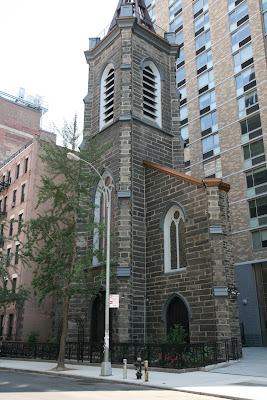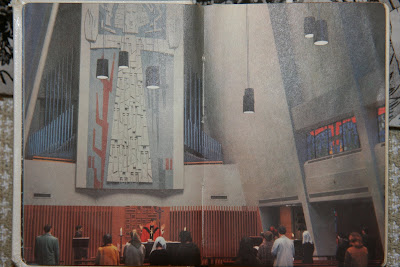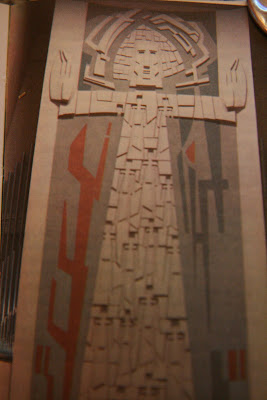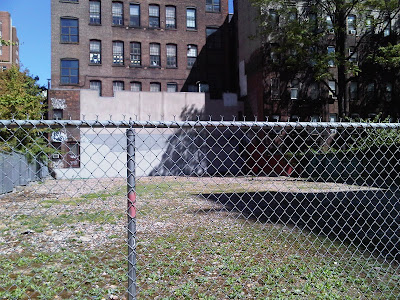The site of St. Ann’s, immediately after the demolition of the church in 2005.
Before proceeding to examine more monuments still standing, let us reflect on some of the losses suffered in the last 12 or so years.
Strangely, the building of the parochial school of St. Ann’s, closed in the 1940’s, still survives. It is now an apartment building.

All that is left of the once glorious St. Ann’s – the church tower, bizarrely standing alone in front of an NYU high-rise. One of the most prominent parishes in 19th century New York, St. Ann’s was largely the work of Napoleon Le Brun (a parishioner), who incorporated components of an earlier building. It was later the “National Shrine of St. Ann” (apparently one of several), the Armenian Catholic Cathedral and, in the 1980’s, home to the first “official” regularly celebrated Traditional mass in New York.

A photograph taken in May 2009,just after Holy Trinity Chapel on Washington Square had been demolished. One of the most hideous Catholic churches in Manhattan, it was built as the NYU chapel between 1961 and 1964 with donations from the Generoso Pope family (who owned, among other things, the “National Enquirer”). This prominently situated Chapel was undoubtedly intended to make a public statement about Catholicism; its disappearance obviously makes an entirely different point. By the time I encountered it in the early 1980’s, the holy water fonts were being used as ashtrays.


Two photographs of a child’s prayer book of the mid 1960’s featuring Holy Trinity. Note the women wearing mantillas even though the priest is celebrating mass “versus populum” – this is before the Novus Ordo. The figure of Christ(?)shows only too clearly the spiritual crisis the church was beginning to face – even before the council ended.

Not a church but St. Vincent’s Hospital. The former crown jewel of New York Catholic hospitals, it was closed earlier this year. What Cardinal O’Connor had as recently as 1998 proclaimed to be a core function of the Archdiocese (in regard to St. Clare’s Hospital) now disappeared without a whimper from the Archdiocese or the laity. Indeed, the Archdiocese was undoubtedly trying to put as much distance as possible between it and the NY Catholic hospitals to avoid somehow ending up on the hook for their monstrous indebtedness. General Catholic hospital care in New York is no more. Lost too is a Catholic alternative for the issues surrounding maternity care.
In Boston, where the Catholic hospital system appears headed down the same path as St. Vincent’s, voices now arise denying the maintaining hospitals for the sick should be a part of the mission of the Catholic Church at all….

This nurse has glowered at passers-by for generations. On the buildings one encounters the great names of Catholic New York past: Alfred Smith, Raskob….

This empty lot is all that remains of the Redemptorist church of Our Lady of Perpetual Help (not to be confused with the huge church of that name still standing north of Bay Ridge, Brooklyn) on East 61st street. It was built in 1887 and was originally Czech. This parish was undoubtedly harmed very early on by the construction of the Queensboro bridge almost next door. By the time I paid a visit around 1990 only the lower church could be used. It featured a remarkable assortment of devotional statues. In 1998 the church was razed.

The somewhat forbidding rectory remains – now OLPH residence and apparently still very much in use. It is next to the lot where the former church stood.

The old OLPH parochial school, now the Manhattan “early learning” center.

Given the “split personality” the Catholic church has evidenced towards its historical and artistic inheritance, it’s good to know professional help is near at hand.(the Karen Horney Clinic next to the old OLPH complex)
D. W. Dunlap,From Abyssinian to Zion: A Guide to Manhattan ‘s Houses of Worship; (Columbia University Press, NY, 2004)at 104 (Holy Trinity) and 166 (Our Lady of Perpetual Help).

Related Articles
No user responded in this post